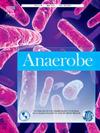聚对苯二甲酸乙二醇酯微塑料急性暴露对厌氧氨氧化颗粒污泥性能的影响研究。
IF 2.6
3区 生物学
Q3 MICROBIOLOGY
引用次数: 0
摘要
背景:厌氧氨氧化是一种新型高效的生物反硝化工艺,并已在实际生产中得到应用。微塑料(MPs)对厌氧氨氧化(anammox)过程的影响研究有限。题目:本研究研究了不同粒径的聚对苯二甲酸乙二醇酯(PET)短期暴露12小时对厌氧氨氧化颗粒污泥(AnGS)的影响及厌氧氨氧化菌(AnAOB)的代谢机制。结果:厌氧氨氧化反应器急性暴露于PET-MPs可促进反应器的反硝化速率。不同粒径PET-MPs的急性暴露使厌氧氨氧化反应的关键酶肼脱氢酶(HDH)活性升高。PET-MPs粒径越大,对反应器的处理效率和HDH活性的促进作用越强。PET-MPs可刺激AnAOB分泌大量胞外聚合物质(EPS)。代谢组学分析显示,添加PET-MPs后,3-甲氧基酪胺丰度下调,l -丝氨酸丰度降低。在13 μm PET-MPs组,l -天冬酰胺丰度上调,这些代谢物的变化影响了各种氨基酸代谢、蛋白水解酶和AnAOB的生物合成。意义:本研究揭示了多磺酸盐对厌氧氨氧化过程的响应特征和机制,为多磺酸盐在废水处理中的应用提供了有益的参考。本文章由计算机程序翻译,如有差异,请以英文原文为准。
Study on acute exposure of polyethylene terephthalate microplastics on the performance of anammox granular sludge
Background
Anaerobic ammonia oxidation is a new and efficient biological denitrification process, which has been used in practice. Research on the effect of microplastics (MPs) on anaerobic ammonia oxidation (anammox) process is limited.
Topic
In this study, the effects of short-term exposure of polyethylene terephthalate (PET) with different particle sizes for 12 h on anammox granular sludge (AnGS) and the metabolic mechanism of anaerobic ammonia oxidizing bacteria (AnAOB) were studied.
Results
The results showed that the acute exposure of anammox reactor to PET-MPs could promote the denitrification rate of the reactor. The enzyme activity of hydrazine dehydrogenase (HDH), the key enzyme of anammox reaction, was increased under acute exposure of different particle sizes of PET-MPs. PET-MPs with larger particle size had a stronger promoting effect on the treatment efficiency and HDH activity of the reactor. PET-MPs could stimulate AnAOB to secrete a large amount of extracellular polymeric substances (EPS). Metabonomic analysis showed that after the addition of PET-MPs, the abundance of 3-methoxytyramine was down-regulated, and the abundance of L-serine decreased. In the 13 μm PET-MPs group, the abundance of L-asparagine was up-regulated, changes in these metabolites affected various amino acid metabolism, proteolytic enzymes, and AnAOB biosynthesis.
Implication
This study provides valuable insights into the response characteristics and mechanism of the anammox process exposed to MPs, which may be helpful for the application of MPs in wastewater treatment.
求助全文
通过发布文献求助,成功后即可免费获取论文全文。
去求助
来源期刊

Anaerobe
生物-微生物学
CiteScore
5.20
自引率
8.70%
发文量
137
审稿时长
76 days
期刊介绍:
Anaerobe is essential reading for those who wish to remain at the forefront of discoveries relating to life processes of strictly anaerobes. The journal is multi-disciplinary, and provides a unique forum for those investigating anaerobic organisms that cause infections in humans and animals, as well as anaerobes that play roles in microbiomes or environmental processes.
Anaerobe publishes reviews, mini reviews, original research articles, notes and case reports. Relevant topics fall into the broad categories of anaerobes in human and animal diseases, anaerobes in the microbiome, anaerobes in the environment, diagnosis of anaerobes in clinical microbiology laboratories, molecular biology, genetics, pathogenesis, toxins and antibiotic susceptibility of anaerobic bacteria.
 求助内容:
求助内容: 应助结果提醒方式:
应助结果提醒方式:


